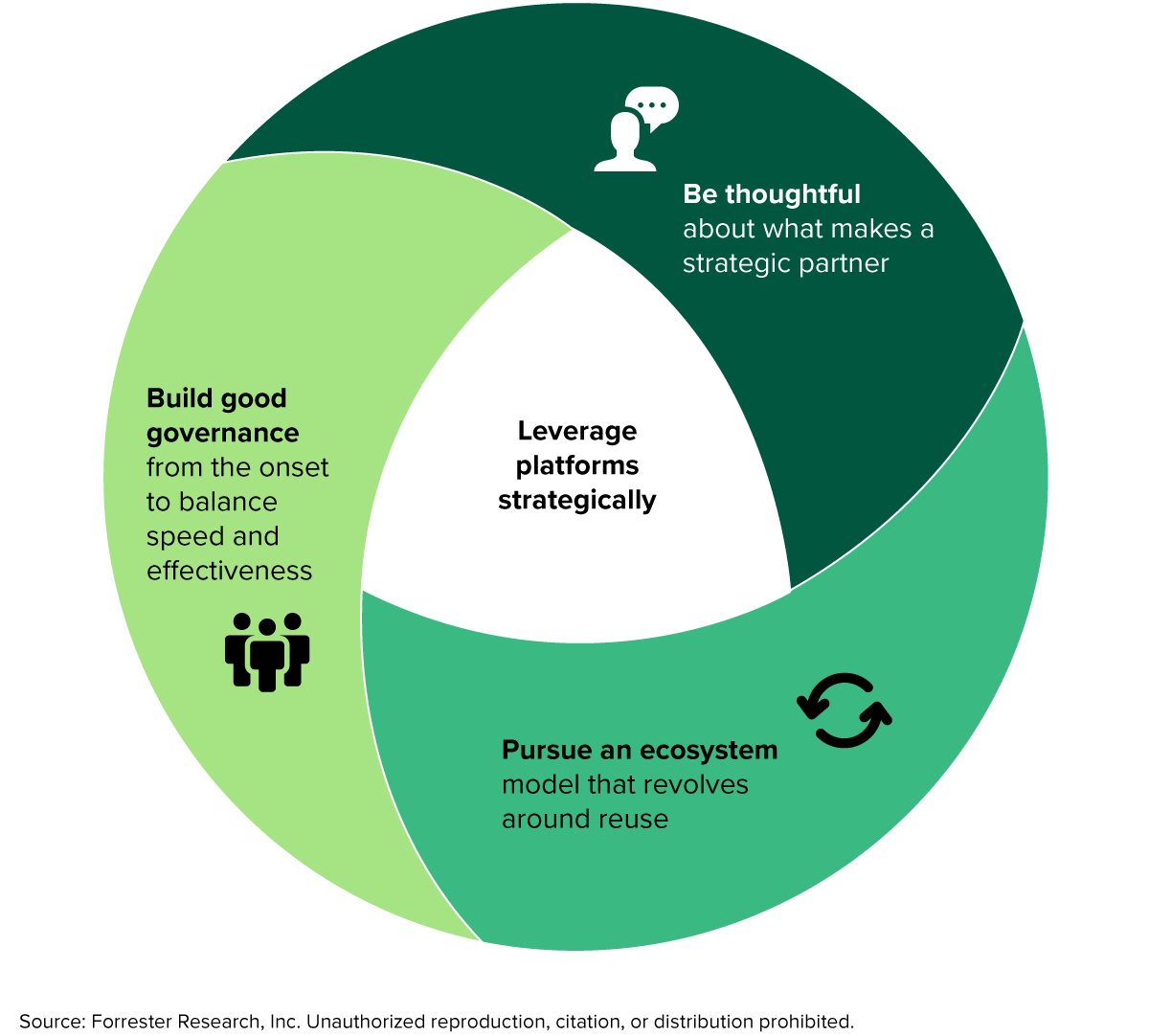The Future Fit Platform Strategy
Ever wonder why the difference between a traditional platform strategy and a future fit platform strategy is simple to describe but hard to achieve? Traditional platform strategies fall behind because they are too rigid and mired in legacy technical debt, stalling potential for innovation. On the other hand, being future fit prioritizes possessing a select number of lean, adaptable platforms that have the scale, flexibility, and ecosystems to maximize business impact. In the report, The Future Fit Platform Strategy, we discuss why the traditional approach cannot meet the needs of today’s business. The modern model is the future standard, capable of meeting both customer and employee needs in a fast and secure way.
So how do technology leaders achieve a future fit platform strategy? By assembling strategic technology platforms built on the cloud and centered in ecosystems. Strategic platforms possess the scale and modularity to allow for an ease in innovation. Heavy customization or technology sprawl do not weigh them down. And strategic platforms can be adapted quickly — by adding new functionalities and streamlining components that lack business value.
An integral component of strategic technology platforms is ecosystems. Specifically, participants include users, developers, and partners. The ecosystem allows for best-practice sharing and for easily swapped functionalities. Thus, in the shift from build versus buy to customize or compose, these participants are the key to moving faster and more effectively. Pursue ecosystems that target reuse — this minimizes customization, sprawl, and risk.

Apply Good Platform Strategies For Good Outcomes
The move to a future fit platform strategy leads to increased efficiency and improved delivery experiences. Key recommendations for leveraging platforms strategically include the following:
- Define “strategic platform” carefully. Ensure that partners align with business needs and values. Partners cannot be too niche and must possess a robust ecosystem. Most importantly, they must be trusted.
- Follow a “Goldilocks” approach in selection and governance. Find the number of partners that is just right for your organization and anticipate that these partners may change over time. Similarly, follow a governance approach that is neither too rigid nor too loose, neither too fragmented nor too dependent. Consistently evaluate your platform strategy and make changes to best fit your business needs.
- Focus on trust. Establishing and managing trust is integral to platform success. Therefore, make monitoring performance, identifying bad intent, and keeping all informed on the latest IT guidance a priority.
- Build on a foundation of the right technology platforms. In the report, we compiled a list of the technology platforms most strategic to enterprises. Composing these platforms properly provides a decisive competitive advantage.
This modern approach to platforms can inspire a reimagining of strategies relating to partners and practices — fostering a cohesive strategy best fitted for the future.
For more information, here’s a good read: The Future Fit Platform Strategy.
